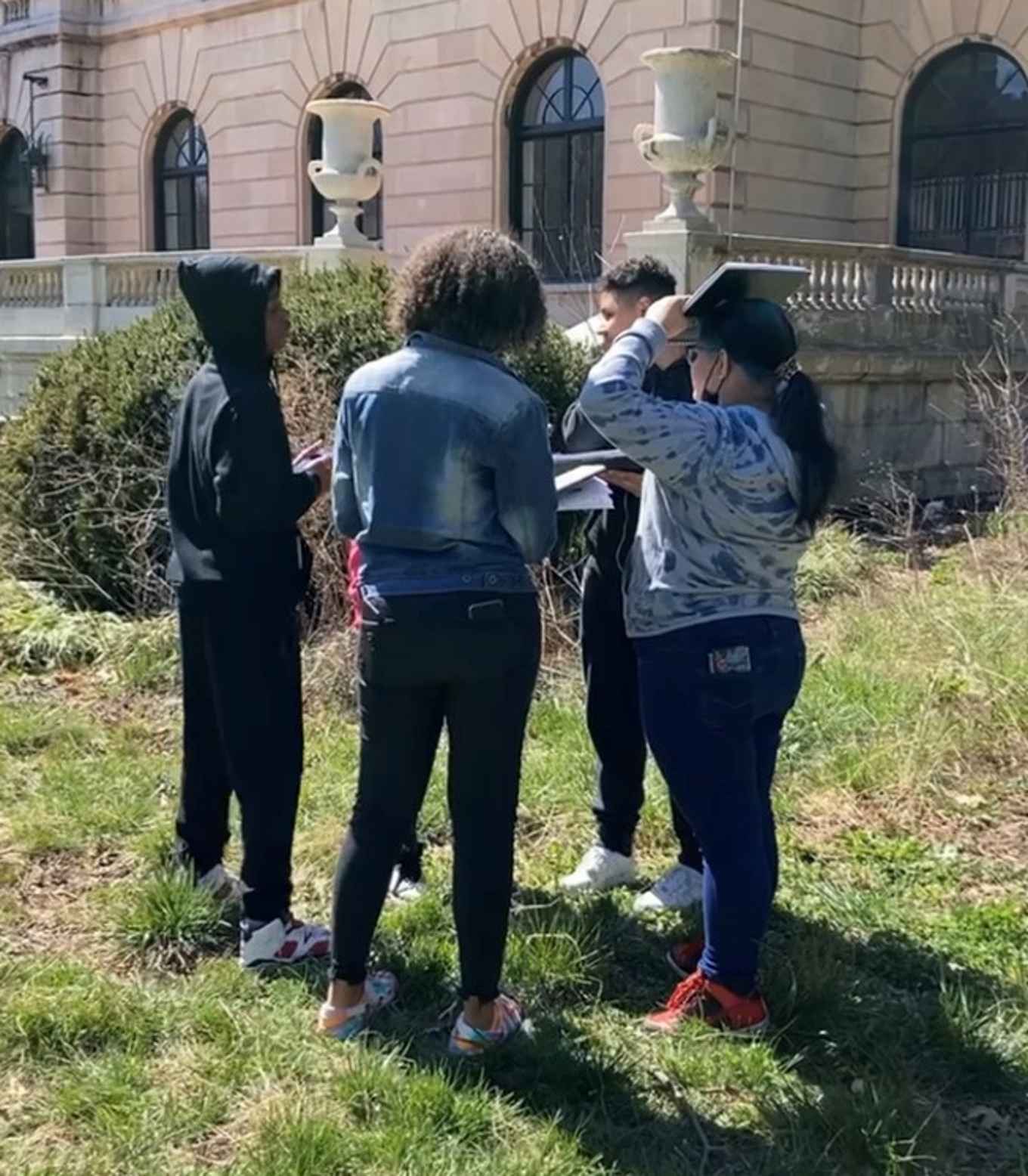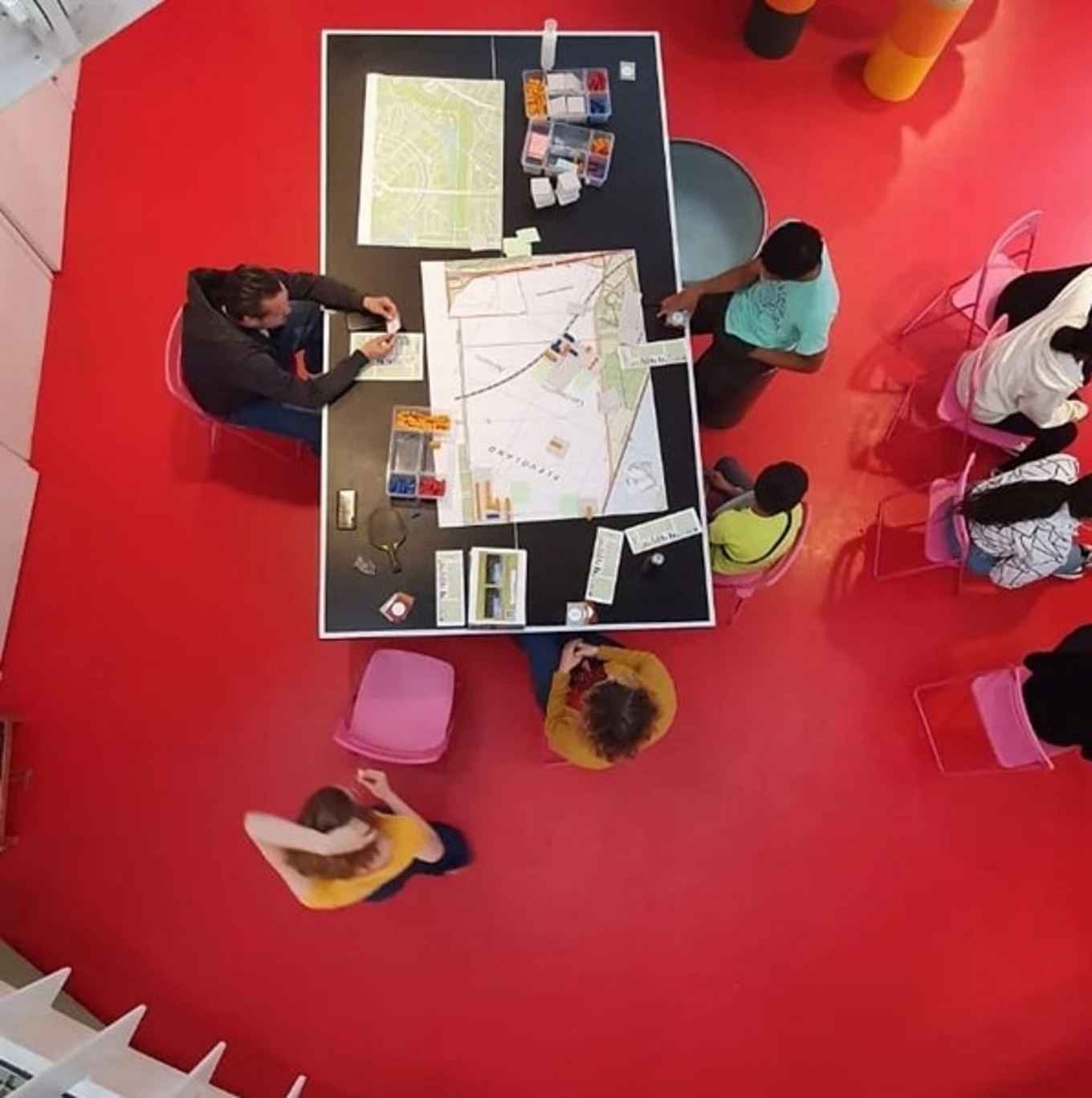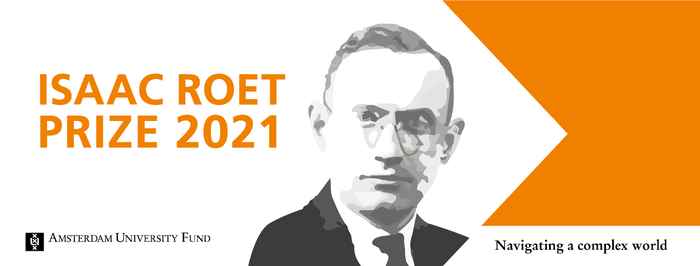Young people and their neighbourhoods
Isaac Roet prize winner 2021
11 July 2022

In the project ‘Hacking Urban Boundaries (HUB)’ researchers, architects and artists worked with teenagers to build an interactive toolkit for an inclusive and creative environment. Through a series of workshops youth in Almere Poort (the Netherlands) and the Bronx (NYC) learned how to make their own safe spaces, develop their own voices and design a realizable project. The toolkit will be published online and later applied in other urban areas around the globe.
Youth in Almere Poort
‘In Almere Poort, the main issue is that youth has no place to socially meet’, observes Francesca Ranalli, PhD candidate at the University of Amsterdam who coordinated the group in Almere. ‘Although the houses in Almere might be bigger than those in Amsterdam, young people have fewer opportunities to socially engage. During winter time they for example meet in the laundromat.’
Ranalli organised a series of workshops with a small group of mainly 16 year olds. The group decided to design their own meeting space in a park in the neighbourhood. ‘They knew exactly what this space needed to meet their specific needs. For example, wind energy to recharge their phones’, says Ranalli. The group awelcomed guests that addressed questions raised by the young participants. ‘For instance, we played an “urban planning game” to learn about the dynamics behind city building, and from a landscape architect we learned more about the plans and procedures for the park where the group envisaged their own place.’ According to Ranalli the whole process gave the teenagers knowledge and a sense of ownership and empowerment, as they learned how to engage with spatial practices.

Youth in The Bronx
In the Bronx in New York Jade Mandrake, artist and interdisciplinary researcher, worked with a slightly younger cohort of around 13 years old. ‘Bronx teens are at a critical moment of identity formation, and discovering personal agency within their immediate conditions is crucial to their future development’, tells Mandrake. ‘There are economic disadvantages linked to persistently higher high school drop-out rates in the Bronx than in the other boroughs. And this is often entangled with other challenges including chronic health disparities and higher rates of crime. All this works to impede social mobility and the agency needed to affect change for these residents.
Through weekly walk-along discussions, intuitive art-making and other methods her group came up with an elaborate plan in which they envisaged a house of their own, including a comfortable library where they could study. ‘In the Bronx, we see a lot of inadequate housing, where siblings do not have spaces of their own to study’ says Mandrake. This was exacerbated by the need to homeschool during the COVID-19 pandemic, and signals the increasing relevance of a safe, third space for teens during these continuing uncertain times.
Besides designing their own place Mandrake observes many other educational effects in subjects ranging from the sciences (sustainable gardening and learning about green technologies) to math (for use in design and spatial planning), to social studies (contextualization of their neighborhood including talks with local and international guests). Psychosocial and emotional effects include the integration of intuition-and-feeling led creative explorations with strategic planning as a means of producing knowledge and breaking social isolation.
Mandrake would love for the plans to be taken up by city planners, ‘it is very important that these young people come to see their ideas realised. That they actually have agency, and that this agency is rooted in who they are as individuals.’
Panel Discussion in the Bronx and Almere
During final panel discussions experiences were shared and discussions took place on how to translate the projects to other cities and relevant stakeholders.
The Bronx final event and panel discussion were inspiring, reports Mandrake. Diverse stakeholders were present, including representatives from the Department of Education (DOE), who are exploring with Mandrake a possible credit system for HUB teens; the New York Botanical Garden, toward integration of the gardening component of the project within urban green spaces under their care; and local real estate developers, for possibilities of a third space based on the teens’ designs and ongoing HUB laboratory in upcoming, mixed-use real estate plans in the area.
Everyone agreed that teenagers are an important and understated part of neigbourhood lifeFrancesca Ranalli
The Almere Poort final event took place at the StrandLab, a local creative foundation situated on the beach of Almere Poort. The group was diverse and inspiring with professionals from the Gemeente Almere and the local social workers that are experts with youth, local residents that are active in the architect/artist residency and a young representative from the HUB.
‘A key element emerging from my overall research in Almere Poort is the importance to build intergenerational spaces of encounter', says Ranalli. 'Everyone agreed that teenagers are an important and understated part of neigbourhood life. This project helped them be heard and they really would like to see their designs realized by the municipality.' Find the two designed places on the project website.

Funded by the Isaac Roet Prize 2021
The project was executed by Francesca Ranalli (PhD candidate at the University of Amsterdam), Jade Mandrake (artist and interdisciplinary researcher) and Eileen Moyer (Professor in the Anthropology of Ecology, Health and Climate Change). It was financially supported by the Isaac Roet Prize 2021.